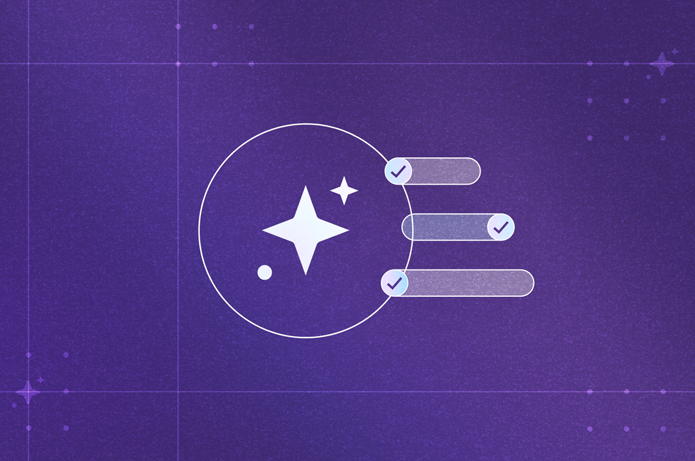Choosing an Employee Assistance Program (EAP) or mental health solution today is a big decision. So much is at stake, including your team's wellbeing and your organization's bottom line.
Getting it right matters more than ever because:
- Traditional EAPs often struggle with low utilization rates (as low as 2-5%), meaning your investment isn't reaching most employees.
- Wait times for mental healthcare can be agonizingly long when you don’t have the right solution.
- A truly effective solution offers rapid access, specialized care for complex conditions, and clear, measurable ROI.
- The right EAP pricing model can have a big impact on launching and maintaining a successful program.
Choosing the right solution means asking the right questions. I've seen too many HR leaders get burned by programs that look great on paper but fall flat when employees need them most. That's why Spring Health has built their approach around the essential questions that truly matter. They really understand the nuances that separate a "check-the-box" program from one that genuinely makes a difference. Let's dive into the essential EAP questions to ask during your evaluation process.
How mature is your mental health program?
Benchmark your current solution, identify key gaps, and explore best-in-class strategies to elevate mental health outcomes.
1. How quickly can employees access care?
Time is everything in mental health. When someone's struggling, waiting weeks for help isn't just frustrating—it's potentially dangerous. This isn't just about convenience; it's about crisis prevention and effective intervention.
Traditional EAPs can leave employees waiting an average of 48 days for appointments. In contrast, innovative solutions like Spring Health's provide access to care in less than 24 hours. This isn't just a nice-to-have … it's critical for preventing mental health crises from escalating and ensuring people get help when they need it most.
Key questions to ask:
- What's your average wait time for first appointments across different provider types?
- How do you handle urgent or crisis situations, and what's the typical response time?
- Do you have after-hours support available, and is it accessible 24/7?
2. What are your actual utilization rates?
As mentioned, traditional EAPs often report utilization rates between 2-5%, which effectively means that the vast majority of your employees aren't even using the benefit you're paying for. Think about that … 95% of your investment could be going untapped.
The best EAP solutions, however, consistently achieve utilization rates of 15-25% or higher by actively removing barriers and making care genuinely accessible and appealing. When evaluating providers, don't just ask about their overall utilization—insist they break down their numbers by service type, demographic, and explain their specific strategies for driving engagement.
Additionally, with the right solution, higher utilization rates should mean higher ROI. That makes it vitally important that you’ve chosen a solution that is used and is worth being used.
| Feature | Traditional EAP | Enhanced EAP solutions (e.g., Spring Health) |
|---|---|---|
| Engagement rates | 2–5% (typical) | 15–25% or higher (demonstrated) |
| Service scope | Limited, often reactive | Comprehensive, proactive mental healthcare |
| Access speed | Avg. 48 days for appointments | Often less than 24 hours |
| Care matching | Employee-driven search, generic | Personalized, data-driven matching |
3. How do you measure and demonstrate ROI?
This is where you separate the serious players from the rest. Every EAP provider claims they deliver ROI, but few can actually prove it with rigorous, independently validated data. If they can't show you real numbers, it's a red flag.
Spring Health's approach to ROI measurement goes beyond simple claims—they track net ROI, which accounts for the actual cost of delivering savings, not just theoretical benefits. This matters immensely because you need to understand the total value you're getting for your investment, not just a partial picture. They understand that transparency is key here.
Essential ROI questions:
- Can you provide certified savings?
- Can you provide net ROI (including solution costs)?
- Can you adjudicate savings and ROI using my own data?
- Can you guarantee ROI for any customer?
- Is your ROI backed by an external performance guarantee?
Contain costs with better care
Employer-sponsored healthcare costs are expected to rise 9% next year. Watch our webinar to see how to better contain these rising costs.
4. What types of providers and services do you offer?
The days of one-size-fits-all mental health support are definitively over. Your workforce is diverse, with varied backgrounds, needs, and preferences, and your EAP must reflect that reality.
Look for solutions that offer a broad spectrum of support, including:
- Licensed therapists and psychologists specializing in various modalities.
- Specialized coaches for specific needs like career development, stress management, or parental support.
- Psychiatrists for medication management, when appropriate.
- Cultural and linguistic diversity within their provider network.
The quality and diversity of the provider network directly impacts employee satisfaction and, more importantly, clinical outcomes. Always ask about provider credentials, specialties, their matching process, and how they ensure employees are paired with the right type of care.
5. How do you address complex mental health conditions?
Traditional EAPs often struggle with anything beyond basic counseling, which is a major gap. But what happens when an employee needs highly specialized care for eating disorders, substance use disorders, severe depression, or PTSD? Many fall through the cracks.
Spring Health's specialty care approach is designed to address over 50 complex conditions with targeted, specialized interventions. This level of comprehensive care prevents employees from getting lost in the system, enduring long waitlists, or being forced to seek expensive out-of-network treatment when they're already vulnerable. It's about providing continuous, appropriate care.
Questions to explore:
- What specialized programs do you offer beyond general counseling?
- How do you manage referrals for complex conditions, and what's the typical timeline?
- What's included in your base offering versus what requires additional costs for specialized care?
6. What's your approach to measurement-based care?
Here's something many EAP vendors don't want to talk about: How do they actually know if their services are working? Measurement-based care uses validated clinical assessments to track progress throughout treatment. It's not just about providing sessions—it's about ensuring those sessions lead to measurable, tangible improvements in mental health outcomes.
You want to see that people are actually getting better. Yet many EAP providers still can't demonstrate clinical effectiveness with real, objective data. This gap is unacceptable in modern healthcare.
7. How do you handle privacy and confidentiality?
Mental health stigma is very real, with 4 in 5 employees say shame and stigma prevent them from seeking care. Additionally, employees absolutely need to trust that their information is protected. But there's a delicate balance: Employers also need enough aggregate data to understand program effectiveness without compromising individual privacy. It's a tightrope walk.
Critical privacy questions:
- What specific data do you share with employers, and is it always anonymized and aggregated?
- How is individual-level information protected, and what are your data security protocols?
- What are your HIPAA compliance procedures, and how do you ensure adherence?
- How do you handle crisis situations while rigorously maintaining confidentiality and respecting employee privacy?
8. What does your pricing model reveal about incentives?
Outcomes-based pricing models are designed to align the vendor's incentives directly with your goals—they only succeed when your employees get better and you see real results. This creates true partnership.
Traditional bundled pricing can inadvertently hide poor outcomes because providers get paid the same regardless of actual results. Fee-for-service models, when structured correctly, create accountability because payment is tied to actual utilization and demonstrable outcomes.
Pricing model questions:
- How is your fee structure aligned with measurable outcomes and employee well-being?
- What guarantees or performance metrics do you offer on results and ROI?
- How do you handle cost overruns or underutilization from a contractual perspective?
Common EAP challenges these questions address
When you ask these questions, you're actually addressing the most common EAP challenges that have plagued traditional programs for years:
- Low engagement and utilization: If employees and their dependents aren't using the benefit or are waiting too long to use it, that’s a problem.
- Long wait times for appointments: Delaying care can escalate issues.
- Limited, generic provider networks: One-size-fits-all rarely fits anyone well.
- Lack of specialized care options: Complex needs demand specialized support.
- Poor measurement and ROI tracking: You can't manage what you don't measure.
- Misaligned pricing incentives: Does their success depend on your success?
Remember: The questions you ask today determine the mental health support your employees receive tomorrow. Make them count.
Time for a change? Let's talk.
We'd love to learn more about your organization's mental health needs.
FAQ
Q: Our employees haven't used our current EAP much. How can a new solution be different?
A: Many traditional EAPs suffer from low awareness, stigma, and difficult access. Modern solutions, like Spring Health, focus on proactive outreach, personalized care matching, rapid access, and a digital-first approach to make engagement easier and more appealing. The goal is to remove those historical barriers to entry.
Q: How quickly will we see an ROI from a new EAP?
A: With the right solution, you should expect to see ROI in the first year. For example, in a JAMA Network Open study, Spring Health employers saved nearly $2 in health plan costs for every $1 spent, providing $1,070 in net savings per participant in the first year. And those savings should continue to grow in future years with the solution.
Q: What if our employees are wary of using a new mental health benefit?
A: It's natural for employees to be cautious. The key is clear communication about confidentiality, ease of access, the diverse range of providers, and the solution's commitment to personalized, effective care.

Hayden Goethe is the Content Marketing Lead at Spring Health, where he creates content and strategies that connect HR and benefits leaders with the insights they need to support employee mental health. With a journalist's background in storytelling and a passion for improving mental health, Hayden helps bring the Spring Health mission to life through thought leadership and compelling narratives.

Hayden Goethe is the Content Marketing Lead at Spring Health, where he creates content and strategies that connect HR and benefits leaders with the insights they need to support employee mental health. With a journalist's background in storytelling and a passion for improving mental health, Hayden helps bring the Spring Health mission to life through thought leadership and compelling narratives.
.png)
Stephanie Roelofs, LCSW is a provider at Spring Health, focusing on clients with EAP benefits. She specializes in women’s health and provides therapy for anxiety, depression, and life challenges.


.png)
.png)




.png)



.png)


.png)





